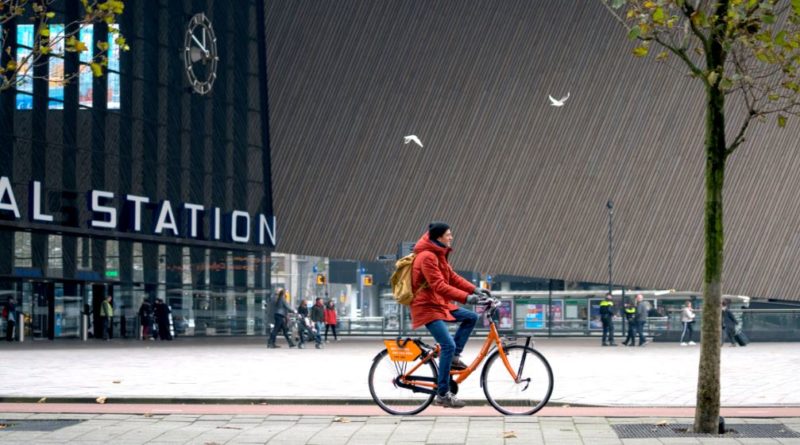What role has bike share in creating new cyclists?
The creation of new cyclists has become a central goal for the bike trade and bike sharing has played an at times controversial role in edging closer to a higher modal share.
CI.N asks a panel of Cycling Industries Europe’s bike share working group experts for their insights on the future and how the wider business may benefit.
 What have been the key evolutions in making bike sharing a success in recent years?
What have been the key evolutions in making bike sharing a success in recent years?
Erdem Ovacik, Donkey Republic
What has been increasingly important in making bike share a success has been to create a simple and flexible offering that is affordable and responsible. We need to take into account not only riders, but all citizens in the city as stakeholders, and make sure we are responsible in using public space. We need to offer cities a real solution, without long waiting times to set up the system.
A reliable system with tested hardware, software and operational track record is important for cities. What worked for us is that while we gained more track record, we have been also able to keep our costs low and maintain an affordable, no-hassle solutions.
Steve Pyer, Ride-On Scotland (Note: Steve has now left to join Spin Scooters)
The influx of the Chinese dockless models with new technology and massive fanfare injected much needed excitement into the industry and forced traditional companies to evolve quickly. This also generated huge amounts of press coverage into the benefits of cycling. However, in terms of specific evolutions primarily we should talk about flexibility with dockless and hybrid models able to deploy much faster and with less cost of traditional docked schemes.
Secondly, accessibility has grown thanks to using a mobile phone in tandem with the hire, which is much more convenient that a specific access card.
Last of all, e-Bikes have become more mainstream and have introduced a whole new demographic to the wider industry. Often people’s first experience of an e-Bike may be a dockless unit, creating new customer potential.
Kristian Brink, Urban Sharing
Operational challenges and digitisation have been key. For the latter, because the digitisation has brought a whole new set of opportunities – take Mobility-as-a-Service and Intelligent Transport Systems, as an example – these have allowed bike sharing to enter the realm of public transport. In regards to the operational challenges, that is experience that comes over time. In the last 15 years, companies have understood how a shared economy like bike sharing works, and how to meet the demand at the right time of the day and at the right location. Not an easy task, but the simple tracing of operational impacts has had an enormous influence in the improvement of the service.
 Typically, what is the process for a bike share provider to partner with an authority and latterly manage the fleet’s use in a city?
Typically, what is the process for a bike share provider to partner with an authority and latterly manage the fleet’s use in a city?
Erdem Ovacik, Donkey Republic
Typically, the authority engages us in a conversation to understand what regulatory and contractual options there are to launch and operate a successful system. Most cities do require some form of public financial support to successfully launch a service; the key is to find what are most important considerations of the city.
Depending on the size, level of bureaucracy and sense of urgency, from the initial interest to the point of starting a tender, it usually takes two to six months. In some cases, the city can find other innovative ways to fund a scheme, for example by identifying and developing sponsor partners, or purchasing memberships for the workers of the city.
Steve Pyer, Ride-On Scotland
The main process is through formal public tender, whereby suitably qualified companies can bid on an equal playing field to deploy and operate in a city. The City will then select their preferred organisation based on price or quality. This can be a long process between six and 18 months of a procurement cycle.
Recently, with free dockless companies a faster MOU has been used, however this has very rapidly gone out of favour, as cities has much less control over the operation.
Kristian Brink, Urban Sharing
This will usually happen through a public call for bids, or request for proposals (RFP), where the procurement office of a public company or city decides to invest in a bike sharing system. Contracts are very different depending on the region and the contracting authority (service contracts, build-operate-transfer, supply-only etc) but it’s the only way to count on public financial support.
How variable is a given authority’s response when approached about share schemes?
Erdem Ovacik, Donkey Republic
Political will is crucial, both concerning share scheme, and also cultivating a strong cycling and bike-parking infrastructure. It’s often a fight for space with others, especially cars.
Steve Pyer, Ride-On Scotland
The climate has changed rapidly in the last few years and especially given the transport challenges faced in 2020. Political will is essential. Most cities now see bikeshare as an essential transport option and are willing to back and fund the scheme.
The best example is Paris, where Anne Hidalgo has backed cycling and the new bikeshare scheme, resulting in nearly 200,000 journeys a day at peak, on their scheme. London by contrast peaks at nearly 70,000 journeys a day – which is still awesome compared to some perceptions before it launched 10 years ago.
Kristian Brink, Urban Sharing
Political will has played an enormous role in the development of bike sharing and it still does, for good and bad. Bike sharing is a high impact, low cost investment for politicians; one of the reasons why we’ve seen bike sharing bloom in various locations over the past few years.
To what extent can bike shops and businesses benefit from bike sharing – are there partnerships to be had or trends from which they’ll naturally see trade benefits?
Erdem Ovacik, Donkey Republic
We often partner with a local bike shop or local business that wants to operate, and they run the Donkey bike share scheme. Local businesses are good at local marketing, subscribing local businesses to the scheme. They also often have good relations with the cities, and insights about the city that outsiders lack.
Steve Pyer, Ride-On Scotland
I have seen first-hand that bike shops benefit through additional trade of accessories – in particular helmets and high vis – when a scheme opens in a new city. There has also been evidence from London that many people try cycling in the city for the first time on a bikeshare system due to the low cost, however then go on to purchase their own bikes for greater convenience. There are lots of studies showing that cyclists spend more money in high street shops than motorists, although not directly attributable to bikeshare.
Kristian Brink, Urban Sharing
Beyond the pure modal shift that bike sharing creates by its sole existence in a city, which benefits the local bike industry, bike sharing has a history of partnering up with local shops for maintenance purposes. Revenue shares and economic incentives create an ecosystem of mutual profit by keeping the bike share system of a city up and running. The UK and the US have great examples of small business and community engagement driven bike sharing maintenance.
Have you any data that illustrates the power of share schemes to change people’s transport habits?
Erdem Ovacik, Donkey Republic
Our surveys shows that Donkeys have shifted 24% from using cars, at least, as a part of their trips; whether it was formerly by private car, shared car, ride-hail.
Steve Pyer, Ride-On Scotland
This is very sought-after data, but hard to come by. There have been few data driven surveys asking people about their habits, so unfortunately the answer is nothing scientific at present.
Kristian Brink, Urban Sharing
As a software company for bike share, we count on metrics that help operators define where and when they should carry out a maintenance or rebalancing actions, in order to meet the demand in the best possible way. Cross-sectional data share projects are still not used to their full potential, but case studies like the Bicing in Barcelona show that bike sharing changed the bike use in a critical way – the modal shift from cars to bikes was a reality just a few years after the opening of the system.
What’s the next evolution of bike and/or scooter sharing in cities and are there any barriers in the way to ensuring its success?
Erdem Ovacik, Donkey Republic
Free-floating, aka parking vehicles where-ever in a large zone , ie part of the city, doesn’t work well for the citizens who are not using the scheme due to the clutter on side walks. We also don’t think creating special stations for bike shares is a good idea: it is expensive, and their development takes a long time, they are inflexible. Instead, we find, virtual stations work well to balance riders’ needs for flexibility, and citizens’ needs. They can be established, f.x. every 100m where the city has provided parking space for bikes.
For electric vehicles, cities will need to establish charging or battery swapping infrastructure that can be shared, amongst operators, but perhaps more importantly, also among private owners. Just like using public bike racks, the future of sharing infrastructure should not be developed as a separate platform in parallel or addition to the privately owned vehicles. This would be bad use of space and resources. Instead, we recommend authorities to cultivate more parkings, charging infrastructure and develop standards that all bike- and scooter sharing operators make use of.
Steve Pyer, Ride-On Scotland
E-bike use in schemes will grow and I expect to see the next London tender to follow Paris and move to a large proportion of e-Bikes in the scheme. Other cities will also create bikeshare schemes with more integration into MaaS transit, such as the West Midlands Whim card. The biggest barrier is currently space in some cities – giving up city centre car parking space is an obvious quick win and properly segregated cycling infrastructure – as opposed to painted lines.
Kristian Brink, Urban Sharing
The next evolution, more than Mobility-as-a-Service, will be to connect bike sharing with the rest of the vehicles of the streets, as well as the road infrastructure.
Communication between vehicles will happen sooner than we think, and will change the way we perceive the public space and especially the safety of travelling by bike or any other vehicle on the road. For that purpose, bike sharing and micromobility will need a strong use of data, so software platforms become key at this point in time. The main barrier is actually the lack of a standardised data specification in Europe. The industry will grow much faster once a pan-European data specification has been put in place, allowing for integrations between transport methods and even between cities at a much faster pace, without the need for customisations.
Further reading: is this the formula for bike share success?



